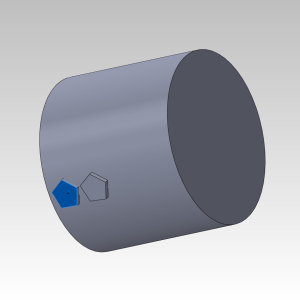The task to determine the degree of oxidation can be both simple formality and a complex puzzle. First of all, this will depend on the formula of the chemical compound, as well as the presence of elementary knowledge in chemistry and mathematics.
Knowing the basic rules and algorithm of serial-logical actions, which will be discussed in this article, when solving problems of this type, each can easily cope with this task. And having learned and learning to determine the degrees of oxidation of diverse chemical compounds, one can safely be taken for the equalization of complex oxidation-reducing reactions by the method of compiling an electronic balance.
The concept of oxidation degree
To learn how to determine the degree of oxidation, first need to figure it out that this concept means?
- The degree of oxidation is used when recording in oxidative reducing reactions when electron transmission from an atom to the atom occurs.
- The degree of oxidation fixes the amount of electrons transferred, denoting the conditional charge of the atom.
- The degree of oxidation and valence is often identical.
This designation is written on top of the chemical element, in its right corner, and is an integer with the "+" or "-" sign. The zero value of the degree of oxidation of the sign is not caring.

Rules for determining the degree of oxidation
Consider the main canons determination of the degree of oxidation:
- Simple elementary substances, that is, those that consist of one type of atoms will always have a zero degree of oxidation. For example, Na0, H02, P04
- There are a number of atoms that are always alone, constant, the degree of oxidation. The values \u200b\u200bgiven in the table is better remembered.
| Element | Characteristic degree of oxidation | Exceptions |
| H. | +1 | Metal hydrides: LІH-1 |
| O. | -2 | O + 2F2, peroxides (H2O2-1), superoxides (KO2-1) ozonides (KO3-1) |
| F. | -1 | |
| Al | +3 | |
| Be, Mg, Ca, Sr, Ba, Ra | +2 | |
| Li, Na, K, Rb, Cs, Fr | +1 |
- As can be seen, the exception is only in hydrogen in the compound with metals, where it acquires the "-1" degree of oxidation.
- Oxygen also takes the degree of oxidation "+2" in a chemical compound with fluorine and "-1" in the compositions of peroxide, protrusion or ozonidis, where oxygen atoms are connected to each other.

- Metal ions have several oxidation degree values \u200b\u200b(and only positive), so it is determined by adjacent elements in the compound. For example, in FECL3, chlorine has the degree of oxidation "-1", it has 3 atom, it means you will multiply -1 by 3, we get "-3". So that in the sum of the degrees of the oxidation of the compound getting "0", the iron must have the degree of oxidation "+3". In the FECL2 formula, iron, respectively, will change its degree on "+2".
- Mathematically summing the degree of oxidation of all atoms in the formula (taking into account the signs), the zero value should always be obtained. For example, in hydrochloric acid H + 1Cl-1 (+1 and -1 \u003d 0), and in sulfuric acid H2 + 1S + 4O3-2 (+1 * 2 \u003d +2 at hydrogen, + 4 in sulfur and -2 * 3 \u003d - 6 in oxygen; in the amount of +6 and -6 give 0).
- The degree of oxidation of the single-variable ion will be equal to its charge. For example: Na +, Ca + 2.
- The highest degree of oxidation, as a rule, is correlated with the number of the group in the Periodic system of D.I. Imendeeva.

Algorithm for action degree of oxidation
The order of finding the degree of oxidation is not complicated, but requires attention and fulfill certain actions.
Task: expand the degree of oxidation in the KMNO4 connection
- The first element is potassium, has a constant degree of oxidation "+1".
To check, you can see the periodic system where potassium is in 1 group of elements. - From the remaining two elements, oxygen, as a rule, takes the degree of oxidation "-2".
- We obtain the following formula: K + 1MnHO4-2. It remains to determine the degree of oxidation of manganese.
So, x - unknown to us the degree of oxidation of manganese. Now it is important to pay attention to the number of atoms in the connection.
The number of potassium atoms is 1, manganese - 1, oxygen - 4.
Taking into account the e-reflectivity of the molecule, when the total (total) charge is zero,
1 * (+ 1) + 1 * (x) + 4 (-2) \u003d 0,
+ 1 + 1x + (- 8) \u003d 0,
-7 + 1x \u003d 0,
(when transferring changing the sign)
1x \u003d +7, x \u003d +7
Thus, the degree of oxidation of manganese in the compound is "+7".
Task: expand the degree of oxidation in the FE2O3 compound.
- Oxygen, as is known, has the degree of oxidation "-2" and is an oxidizer. Taking into account the number of atoms (3), in the amount of oxygen, the value "-6" (-2 * 3 \u003d -6) is obtained, i.e. We multiply the degree of oxidation by the number of atoms.
- To balance the formula and lead to zero, 2 iron atoms will have the degree of oxidation "+3" (2 * + 3 \u003d + 6).
- In the amount we get zero (-6 and +6 \u003d 0).
Task: arrange the degree of oxidation in the Al (NO3) 3 compound.
- The aluminum atom is one and has a constant degree of oxidation "+3".
- Oxygen atoms in the molecule - 9 (3 * 3), the degree of oxidation of oxygen, as is known "-2", then multiplying these values, we get "-18".
- There remains the levels of negative and positive values, thus determining the degree of nitrogen oxidation. -18 and +3, not enough + 15. And considering that there are 3 nitrogen atoms, it is easy to determine its degree of oxidation: 15 divide on 3 and get 5.
- The degree of oxidation of nitrogen "+5", and the formula will be viewed: Al + 3 (N + 5O-23) 3
- If it is difficult to determine the desired value in this way, you can also decide equations:
1 * (+ 3) + 3x + 9 * (- 2) \u003d 0.
+ 3 + 3x-18 \u003d 0
3x \u003d 15.
x \u003d 5.

So, the degree of oxidation is a fairly important concept in chemistry, symbolizing the condition of atoms in the molecule.
Without knowledge of certain provisions or basics, allowing to correctly determine the degree of oxidation, it is impossible to cope with this task. Consequently, the conclusion is one: it is thoroughly familiarizing yourself with and explore the rules for finding the degree of oxidation, clearly and concisely presented in the article, and boldly move on at the difficult path of chemical wisdom.






























